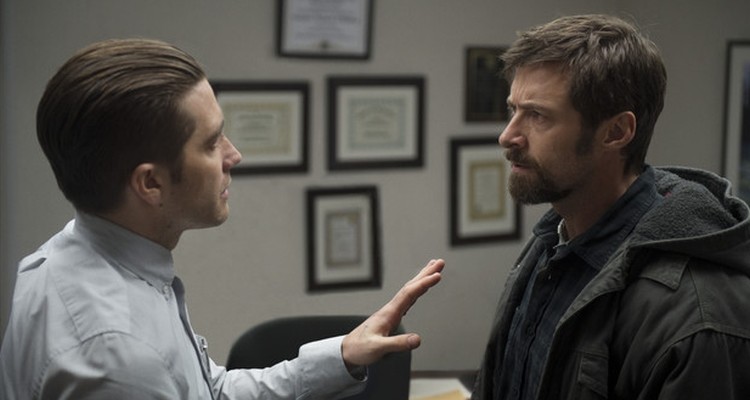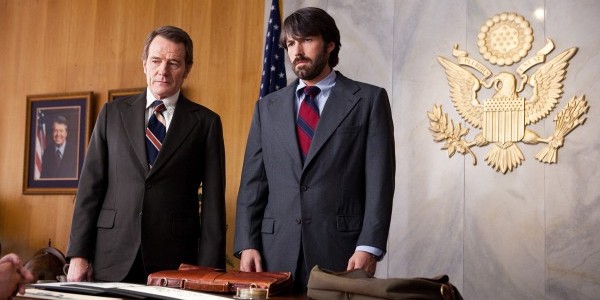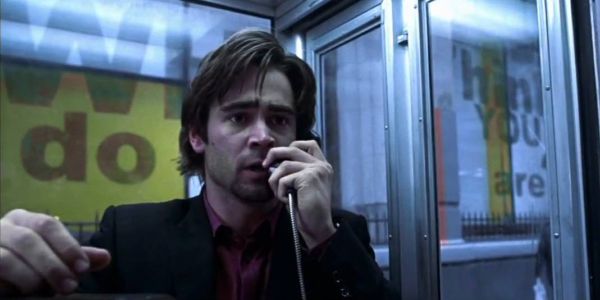Staff Inquiry: What Are Your Film Pet Peeves?

Manon de Reeper is the founder and CEO of Film…
Every month, the team of Film Inquiry is posed a film-related question. This month, we were wondering about film pet peeves. Do we have any? Why are they our pet peeves?
Below, the answers of four team members are presented. Feel free to respond to them in the comments section, and tell us what your pet peeves are – we’re very curious!
And now, without any further ado: our pet peeves.
Alistair Ryder – Characters Talking To Themselves

I have no problem with fourth wall breaking, but I do have a massive problem whenever a character talks to themselves in an unnatural way that acts solely to help fill the audience member in with exposition. At this point in the film I should believe in the story, so when a character acts in a way that only a screenwriter would, it takes me out of the film.
Two recent examples: in Denis Villeneuve’s 2013 thriller Prisoners, we are introduced to Jake Gyllenhaal’s character Loki in a Chinese restaurant having thanksgiving dinner all by himself. His conversation with a waitress about which year of the Chinese Zodiac she was born into, with the character traits that entrails, ends with her abruptly making a comment about her boss being a rooster before walking away. Loki notices her walking away, leaving him all alone, but as she didn’t explain what that meant, he reads the description of what those character traits entail out loud for the sake of furthering the audience’s understanding. No other character is present, making this scene all the more jarring to watch: it’s dialogue that wouldn’t occur were this happening in real life and considering this is intended to be a realistic film, makes it all the more irritating. It is a pet peeve that actually overshadowed my opinions on the rest of the film.
Most often this happens in films that I don’t like, with my reason for not liking these films probably centring on the fact they have used this technique. I felt that Locke, starring Tom Hardy, is the year’s most overrated film. The dialogue is terrible and his performance is entirely misjudged, but these are minor criticisms until he starts talking to himself. If we haven’t gathered from this point in the film already that the character is having an entire mental breakdown, the self-loathing exposition he unleashes at himself should fill in any blanks in the audience’s memory. Again, another example of a film aiming for realism having characters deliver exposition in a way that is entirely unnaturalistic, let alone unnecessary.
Ben Roden – Improper Portrayal of Firearms

It doesn’t happen too often – I’d say once every eight movies. The sigh that escapes my mouth is so full of derision, so ostentatious with disappointment that everyone in the immediate vicinity involuntarily cranes in my direction. Assuming I’m nestled into the crusty red plank that passes for a seat at my local cinema, the outburst usually results in approximately 9 sets of daggers aimed in my direction.
My poor wife, torn between concern and embarrassment will lean close, her eyes probing my face for some sort of explanation. Muscle spasm? A sudden premonition? Is Jon Voight in this movie? (don’t get me started on Voight) “Nine shots,” I mutter, numbed with disappointment. “Nine shots…from a revolver.”
Believe it. By simply omitting a shot (yay puns) of a character reloading his gun, a filmmaker can almost instantly alienate me. It’s the kind of inane nitpicking that only the most avid fanboy could embrace, but the thing that bursts my film-viewing bubble more often than anything else is the improper portrayal of firearms.
When you consider the evocative power of the gun, it’s no wonder how often firearms appear on film. Guns are a quick and dirty shortcut to drama – when handled correctly, the mere presence of a firearm can ratchet up the tension of a scene like nothing else.
Take this scene from 2004’s Crash. By giving us a glimpse of the pistol tucked in Terrence Howard’s waistband, Writer/Director Paul Haggis effectively lights a fuse on an already combustible situation. The cops don’t know that Howard is packing heat, but the audience does, and the knowledge colors the entire scene with the possibility of catastrophe.
Given how effectively guns can be used by filmmakers, it’s disappointing when the proper care isn’t taken. The way guns are used in a film, and more widely, how violence is rendered onscreen, can tell you a lot about the tone and quality of a film. Stock gunfire sound effects are often paired with glorified violence and goofily exaggerated blood squibs. Nameless baddies whose heads explode like ripe melons often square off against protagonists who manage to evade gunfire unless it gruesomely yet harmlessly grazes a rippling bicep.
Despite my bluster, I can admit my complaints are pretty ridiculous, especially when viewed in isolation – what’s worth noting, though, is that when it comes to the overall impact of a film, the stupid, silly details tend to add up. When I have the chance to pour myself into a new world for a few hours each week, I want that world to make sense, down to the smallest trivialities. When filmmakers presume to tell us that little things – the number of bullets in a revolver, say – don’t matter, what they’re really saying is that the world they’ve created for us is nothing but a contrivance. I don’t know about you, but I want more than half-assed facsimile.
SIGH.
Click the following links to watch a few scenes in which firearms are portrayed in a (relatively) realistic way: Road To Perdition, Collateral, True Grit. How might a ‘stagier’ approach to the weapons/violence in each scene affect the dramatic impact?
Chris Worrall – Bad Fact Finding

Science fiction, by its very nature, stretches and changes the scientific realities of our world. Indeed, cinema in general will often play fast and loose with the truth and, on most occasions, it is acceptable. We believe in light-speed travel or conscious machines because the film as a whole captivates and makes us believe (or at least accept) the fantasies of that world.
However, there is a fine lie between wider fantasy and just bad fact-finding: factual errors in films that frustrate because they are both so glaring and, for films that claim to have been so well researched, so easily avoidable. The real gripe lies with films that seek or claim to have real knowledge of their subject matter and then prove the opposite.
Two good examples? Firstly, the moment in the generally-excellent Argo when we see the Hollywood sign destroyed by a famous storm – a storm that did not happen until two years AFTER the events the of the film itself. Secondly, Gravity. It was a thrill ride and a beautifully-shot Oscar winner, but for a film that was allegedly well researched it is riddled with basic mistakes that exist only to further the plot…just one simple pull and George Clooney would have come right back!!
Jacqui Siler – The 555 Phone Number

There are always things in any film that can pull you out of it and ruin your suspension of disbelief. However, for myself, none is worse than the Hollywood 555 number. Inevitably a character will give another character a phone number and to avoid using a real one and some random person getting thousands of phone calls, the number goes something like 555-1234. There are so many problems with this.
First of all, this has been used for ages and now we’re so used to it being a “movie” thing that it automatically makes us go, “oh that’s right, I’m watching a film!” I’ve been in the middle of intense, dramatic, beautiful films and gotten pulled out because of this. Picture this: moody lighting, subtle but tragic score, a sickly looking man.
Man: Please, just go.
Woman: Fine, but…if you need someone to talk to, here’s my number. 310-555-2323.
Like a punch to the gut, your movie is now unintentionally self-aware. Second, this is just lazy writing. There are ways around actually giving out the phone number on screen or verbally. Is this exact phone number a crucial piece of information? In all likelihood, NO! So figure out a way around it. Literally thousands of options exist, but we tend to always get the easiest one to just slap on the page.
Third, it’s actually not that hard to find out what numbers aren’t in use for specific area codes. It would take a production assistant all of ten minutes maybe to look up a phone number, write it down, run it to their boss and for it to be added to the script. If the number is used at some point in the future, it’s probably fine. Let’s face it, how many people actually remember the numbers they hear, let alone call them?
This is my call to action, Hollywood. Stop this nonsense!
So, how about you? What are you pet peeves? What do you think of our pet peeves?
Share your thoughts below!
(top image source: Prisoners – Warner Bros. Pictures)
Does content like this matter to you?
Become a Member and support film journalism. Unlock access to all of Film Inquiry`s great articles. Join a community of like-minded readers who are passionate about cinema - get access to our private members Network, give back to independent filmmakers, and more.
Manon de Reeper is the founder and CEO of Film Inquiry, and a screenwriter/producer. Her directorial debut, a horror short film, is forthcoming in 2021.













